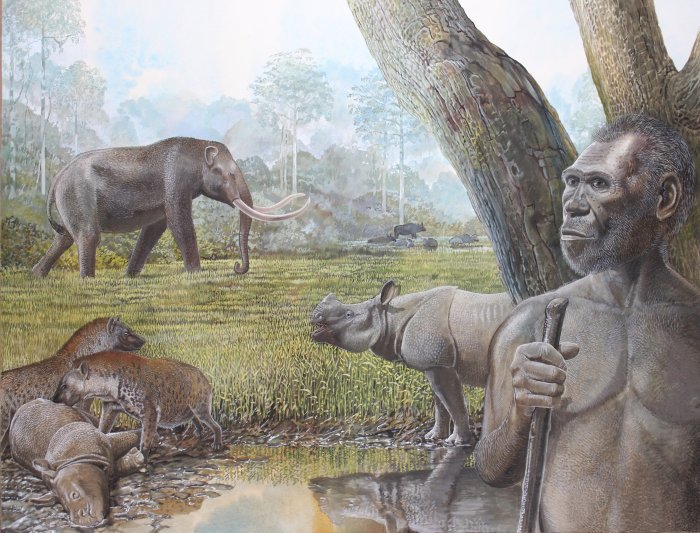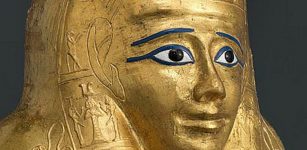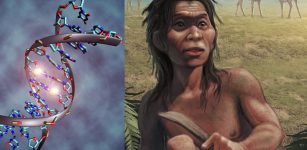Loss Of Rainforests, Grasslands In Southeast Asia Caused Extinction Of Megafauna And Ancient Humans
Conny Waters - AncientPages.com - The loss of tropical rainforests and grasslands that once dominated Southeast Asia caused the extinction of many of the region's megafauna, and probably of ancient humans too, according to scientists from the Department of Archaeology at MPI-SHH in Germany and Griffith University's Australian Research Centre for Human Evolution.
 Artist's reconstruction of a savannah in Middle Pleistocene Southeast Asia. In the foreground, Homo erectus, stegodon, hyenas, and Asian rhinos are depicted. Water buffalo can be seen at the edge of a riparian forest in the background Credit: Peter Schouten
Artist's reconstruction of a savannah in Middle Pleistocene Southeast Asia. In the foreground, Homo erectus, stegodon, hyenas, and Asian rhinos are depicted. Water buffalo can be seen at the edge of a riparian forest in the background Credit: Peter Schouten
"Southeast Asia is often overlooked in global discussions of megafauna extinctions, but it once had a much richer mammal community full of giants now extinct," lead author, Associate Professor Julien Louys from Australia's Griffith University said.
By looking at the teeth of living and fossilized mammals, researchers were able to examine the diet of past animals, as well as the climatic conditions at the time they were alive.
"These types of analyses provide us with unique and unparalleled snapshots into the diets of these species and the environments in which they roamed," says Dr. Patrick Roberts of the MPI-SHH, the other corresponding author of this study.
During the early part of the Pleistocene from about 2.6 million years ago, rainforests dominated the area from present-day Myanmar to Indonesia during the early part of the Pleistocene but began to give way to more grassland environments.
As Dr. Patrick Roberts from Germany's Max Planck Institute said, "in the past 100,000 years, relatively recently in geological terms, we have seen a return to the much denser rainforests that we see today."
The loss of many ancient southeast Asian megafauna was found to be correlated with the loss of these savannah environments. Likewise, ancient human species that were once found in the region, such as Homo erectus, were unable to adapt to the re-expansion of forests.
"It is only our species, Homo sapiens, that appears to have had the required skills to successfully exploit and thrive in rainforest environments," Roberts said.
"All other hominin species were apparently unable to adapt to these dynamic, extreme environments."
The loss of many ancient southeast Asian megafauna was found to be correlated with the loss of these savannah environments. Likewise, ancient human species that were once found in the region, such as Homo erectus, were unable to adapt to the re-expansion of forests.
"Rather than benefiting from the expansion of rainforests over the last few thousand years, Southeast Asian mammals are under unprecedented threat from the actions of humans," Louys said.
"By taking over vast tracts of rainforest through urban expansion, deforestation and overhunting, we're at risk of losing some of the last megafauna still walking the Earth."
Written by Conny Waters - AncientPages.com Staff Writer




















